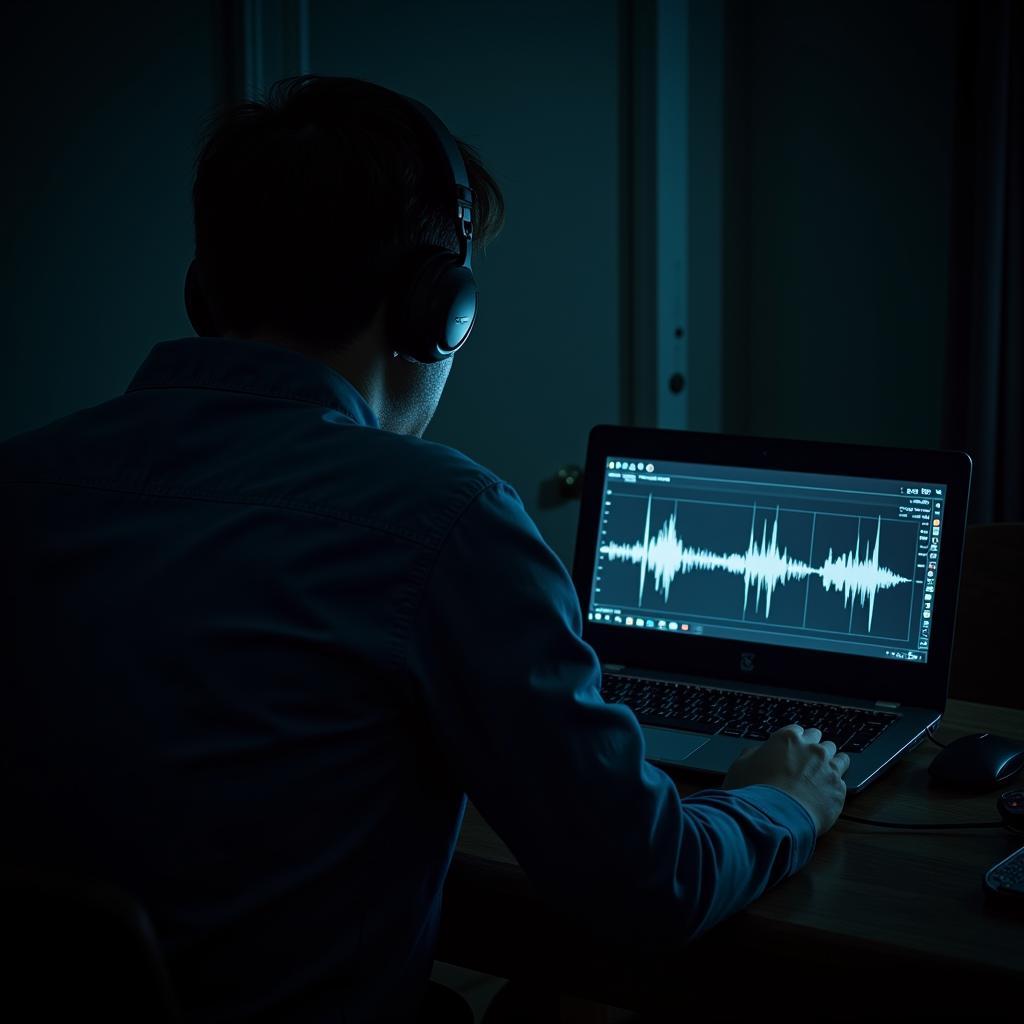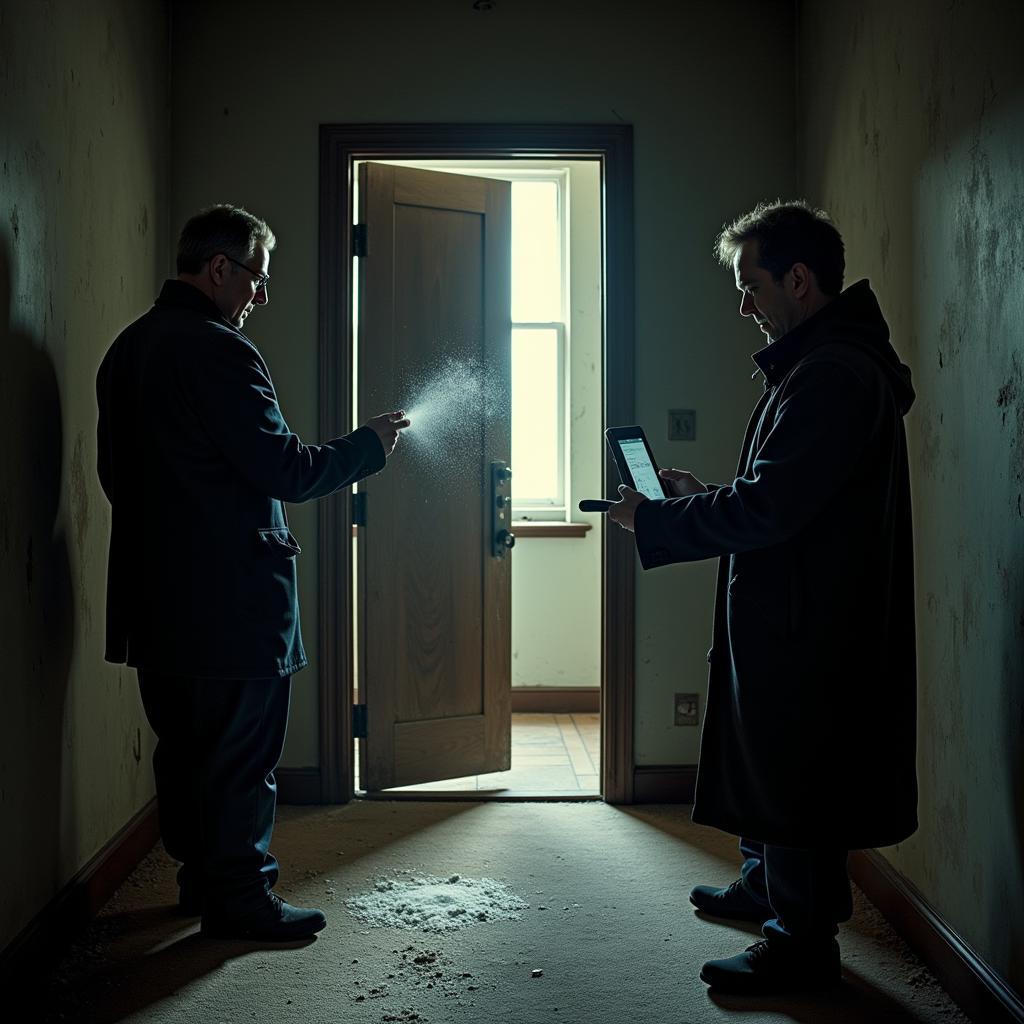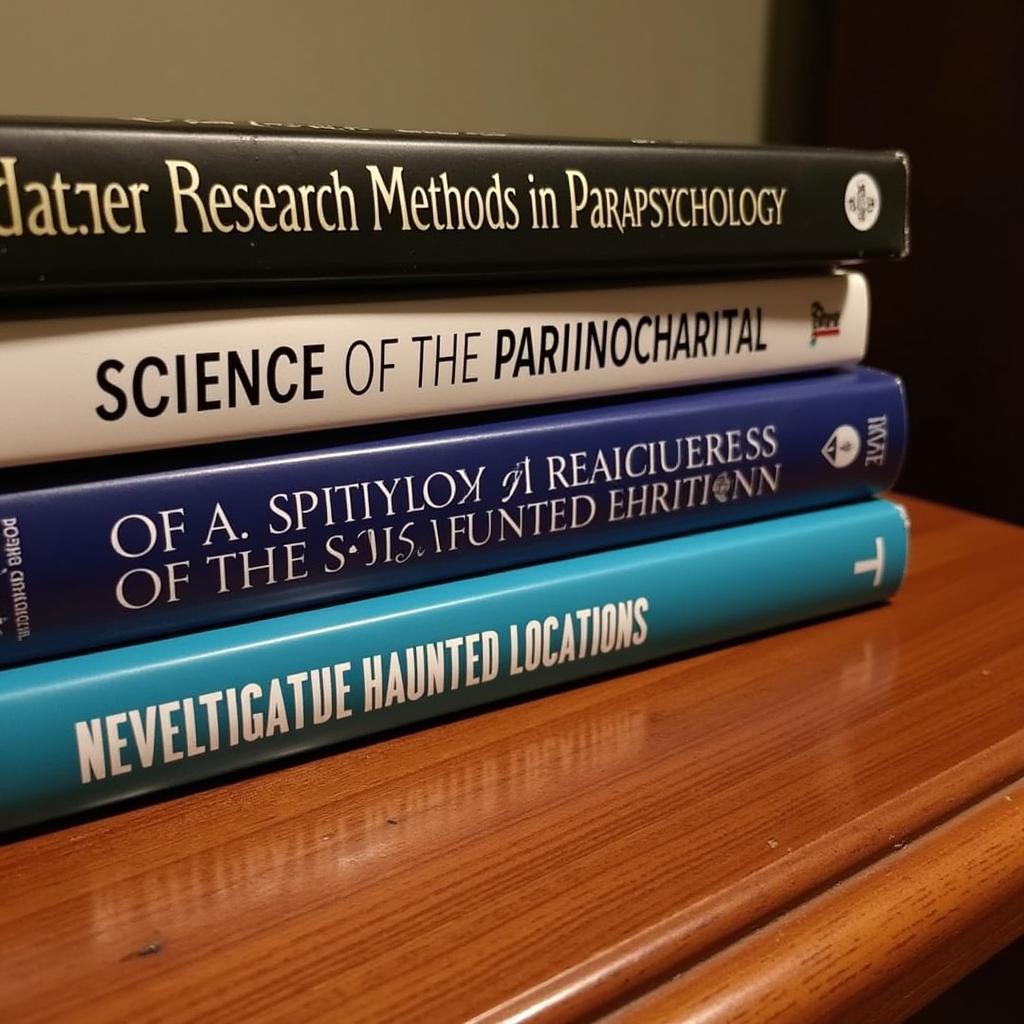The quest to understand the unknown has captivated humanity for centuries. When it comes to the paranormal, the line between curiosity and concrete knowledge can feel particularly blurry. That’s where research, the cornerstone of any scientific endeavor, steps in. Within the realm of paranormal investigation, understanding the “Difference Between Basic And Applied Research” is crucial.
Delving into the Unknown: Basic Research
Imagine venturing into a haunted forest armed with nothing but a flashlight and an open mind. You’re not there to get rid of the ghosts, but to simply observe, document, and understand their behavior. That’s the essence of basic research – an exploration driven by curiosity with the goal of expanding our knowledge base.
In the context of the paranormal, basic research might involve:
- Documenting EVPs (Electronic Voice Phenomena): Analyzing recordings for unexplained voices or sounds to identify patterns or common characteristics.
- Mapping Energy Fields: Using tools like EMF meters and dowsing rods to detect and map potential energy fluctuations in a location.
- Observing Apparitions: Carefully observing and documenting the appearance, behavior, and movements of potential apparitions.
The key takeaway is that basic research isn’t trying to immediately “solve” a haunting or paranormal phenomenon. It’s about gathering data, identifying trends, and building a foundation of understanding upon which further research can be built.
 Paranormal researcher analyzing EVP recordings
Paranormal researcher analyzing EVP recordings
Seeking Solutions: Applied Research
Let’s return to our haunted forest. This time, you’re not just there to observe; you’re there to help a terrified family reclaim their home. You’re looking for practical solutions, armed with the knowledge gained from prior observations and studies. This is the realm of applied research – taking the foundational knowledge of basic research and applying it to solve specific problems.
In paranormal investigation, applied research might involve:
- Testing Remediation Techniques: Experimenting with methods like smudging, salt barriers, or spiritual cleansing rituals to assess their effectiveness in reducing paranormal activity.
- Developing Communication Protocols: Establishing clear and respectful methods for interacting with or requesting the departure of spirits based on observed behaviors.
- Investigating Environmental Factors: Analyzing potential environmental triggers, like electromagnetic fields or infrasound, that could be influencing paranormal experiences.
The focus here is on actionable results. Applied research aims to use existing knowledge to develop practical strategies, techniques, and tools to address specific paranormal issues.
 Paranormal investigators testing remediation techniques in a haunted house
Paranormal investigators testing remediation techniques in a haunted house
Bridging the Gap: How Basic and Applied Research Intertwine
While distinct in their immediate goals, basic and applied research in paranormal investigation are not mutually exclusive. They exist in a dynamic interplay, each informing and enriching the other.
- Basic research provides the raw data and foundational knowledge that applied research needs to develop effective solutions.
- Applied research, through its experiments and testing, often uncovers new questions and avenues of inquiry for basic research to explore.
For example, documenting EVPs (basic research) might reveal consistent phrases or tones used by a specific type of spirit. This information can then be used to develop targeted communication protocols (applied research).
“Think of it like building a house,” says Dr. Emily Carter, a leading researcher in parapsychology. “Basic research lays the foundation, while applied research builds the walls and roof. You need both to create a strong and functional structure.”
The Ongoing Search for Understanding
Whether we’re driven by a thirst for knowledge or a desire to help those experiencing the unexplained, the difference between basic and applied research is fundamental to the field of paranormal investigation. By embracing both approaches, we can continue to chip away at the mysteries of the paranormal, one experiment, one observation, and one investigation at a time.
Frequently Asked Questions
- Is one type of research more important than the other? No, both basic and applied research are equally valuable and contribute to our understanding of the paranormal in different but complementary ways.
- Do I need to be a scientist to conduct paranormal research? While a scientific background can be helpful, anyone with a genuine interest and a willingness to learn can contribute to Paranormal Research.
- Where can I find more information about basic and applied research methods? Many resources are available online and in libraries. Look for books and articles on research methodology, parapsychology, and anomalous phenomena.
 Books on parapsychology and research methodology
Books on parapsychology and research methodology
For further assistance or to discuss your own paranormal experiences, don’t hesitate to contact us at Phone Number: 0904826292, Email: research@gmail.com or visit us at: No. 31, Alley 142/7, P. Phú Viên, Bồ Đề, Long Biên, Hà Nội, Việt Nam. Our dedicated team is available 24/7 to offer support and guidance.